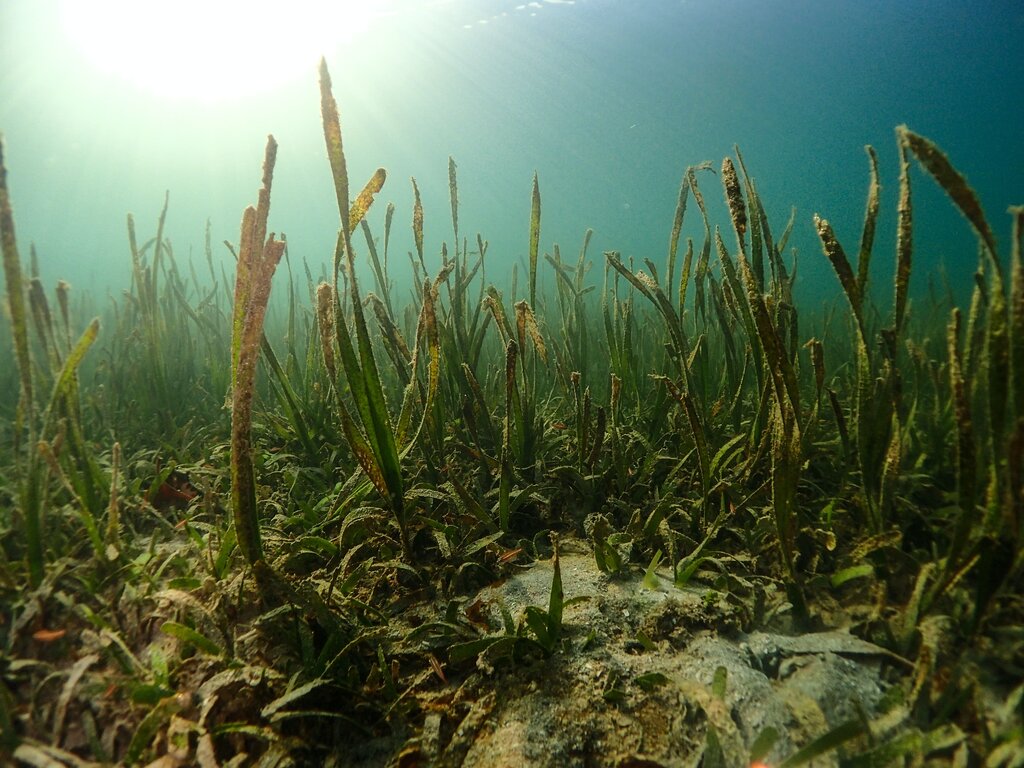A research project spanning over two decades found planting seagrass to be a successful and productive solution to restoring oceans, as scientists discovered the ocean plant to be particularly an effective carbon sink, purifying the water and creating self-sustaining habitats for marine wildlife. Known as the world’s largest seagrass project, it’s findings have influenced other countries to undergo and fund their own restoration projects, with hopes of easing the impacts of climate change.
—
A 20-year-long research project that examined ways to restore habitat degradation in sea bays in Virginia in the US has reported large-scale success in restoring the growth of eelgrass, a marine plant known for capturing and storing carbon. Dubbed the world’s largest seagrass project, this research has inspired many other restoration projects across the globe, with the intention of boosting marine life, purifying water, protecting coastlines and alleviating climate change by building more carbon sinks.
Led by environmental sciences professor Karen McGlathery at the University of Virginia, the two-decade-long project scattered eelgrass seeds across four bays: Cobb, South, Spider Crab and Hog Island. They found the seeds to have survived, and their growth has proven that marine habitats can be brought back to life in a self-sustaining way.
After reported success in the four bays, an army of volunteers distributed nearly 75 million seeds across 9,000 acres of coastal bays, and the benefits have been recorded to include improved water quality, increasing marine biodiversity, as well as effective an carbon sink to capture and store carbon.
The 2020 research paper established that this project is a “blueprint for restoring and maintaining healthy ecosystems” and believes that it “is potentially a prime model for restoration in the 21st century, as the project focused not only on reviving this essential habitat but also on charting the cascading effects for ecosystem functioning”.
Although seagrass covers less than 0.2% of the ocean, it is able to constitute 10% of the ocean’s ability to store carbon. Seagrass expert and marine science professor Carlos Duarte at King Abdullah University of Science and Technology in Saudi Arabia has expressed the sheer scale and valuable data the project provides on the benefits of seagrass, labelling it to be “game changing”. Not only does it an powerful carbon sink, it can also provide vital habitat for marine life, help purify water and protect coastlines, but can even trap and store microplastics, small pieces of plastic debris which can be harmful to our ocean and aquatic life.
You might also like: Seagrass, an Important Ocean Plant, is Making a Comeback
These findings have inspired a number of projects within the UK. In the Isle of Wight, a team of scientists found that eelgrass displayed an excellent ability in sucking up carbon quicker than trees, therefore a suitable natural remedy for climate change that should be explored deeper. They emphasised that restoration projects being set up are vital, as they would need to bring back thousands of hectares of seagrass meadow that is currently disappearing at an alarming rate.
Marine biologist Yasmin Meeds has stressed that the 92% loss of seagrass in the UK within the last century has been due to mining, dredging and pollution that has gone into the oceans. She states: “restoration projects will help to replant some of these seagrasses to actually be able to mitigate the impacts of climate change as they are able to take up carbon in the process of photosynthesis and can also protect the coastlines from storm surges and sea level rises.”
Across the UK, six new research projects have received funding for further research into investigating how to protect the future of the marine and coastal economy. The UK Research and Innovation (UKRI) has funded researchers with a share of £9.2million, hoping to alleviate the increased pressures from climate change, risks of flooding, and threats to marine life.
The next phase for the Virginia Bays project is to measure the amount of carbon that seagrass can store to then determine whether this can be converted for carbon credits, a permit which allows individuals and companies to account for their carbon emissions from activities that protect ecosystems, support community development, or install efficient technology to reduce or remove emissions from the atmosphere. Currently, the project is in the process of registering with Verra, a leading certifier of carbon credits.
Featured image by Benjamin L. Jones on Unsplash


















